The AMD Threadripper 2 Teaser: Pre-Orders Start Today, Up to 32 Cores
by Ian Cutress on August 6, 2018 9:00 AM ESTX399 Motherboards: The MSI X399 Creation
For the motherboard situation, AMD clarified that all motherboards on the market today will be able to run the new 250W processors. The differences will be in how well each motherboard will be able to overclock, with AMD citing that the newer models and revisions should perform better, given that they were built with a higher power rating already in mind. Boards like the X399 Creation should also help in pushing the first generation Ryzen Threadripper.
Box. Has board inside.
As noted back at Computex, the MSI X399 Creation is a very visually busy motherboard. Lots of angles, and lots of shades of grey. I know it is customary in some Asian languages and magazines to be very dense, and this is kind of what that looks like. Most of the time I prefer a simpler, elegant design. This design does not scream elegance.
The key headline for this motherboard is the power delivery. MSI has put 16 phases on the processor, and another three for "uncore" portion of the chip, or as AMD calls it, the SoC. In order to fit them in, the DRAM slots are slightly further down than average, but it also allows MSI to put in a larger heatsink, which also connects to the heatsink near the rear panel of the board.
In case you forget the name: Creation.
Storage on the motherboard comes in two forms: eight SATA ports, and seven M.2 drives. That is not a typo: MSI has enabled this motherboard with seven M.2 slots. Three come from on the board, and are found under the chipset heatsink. Here are two of them:
The other four comes from an add-in PCIe card. We also saw this at Computex, and it uses a dual-slot design. It looks like a GPU:
But inside are four M.2 slots, with thermal pad on the heatsink to assist with cooling.
MSI states that this was built specifically with Threadripper in mind, so I’m going to annoy our SSD reviewer, Billy Tallis, to hand over a few more drives.
Also on the board is an extensive rear panel, with USB 3.1 ports, USB 3.0 ports, Ethernet, and Wi-Fi:


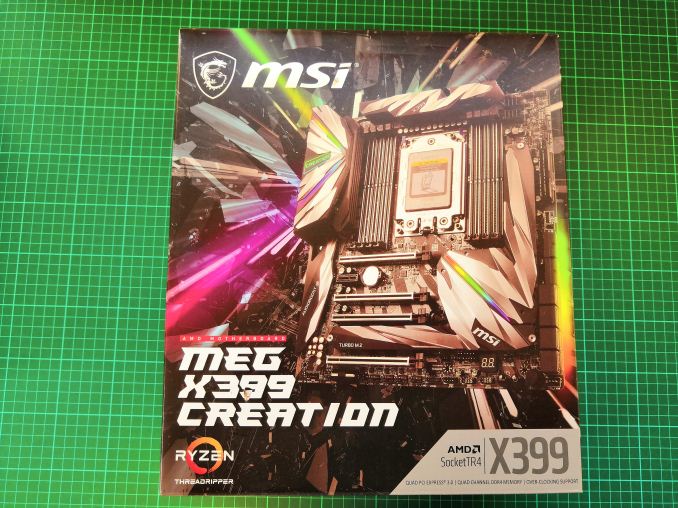
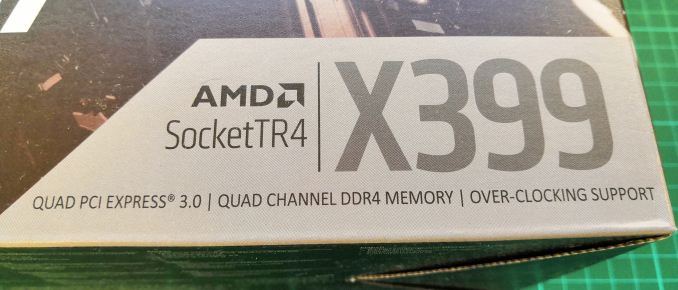
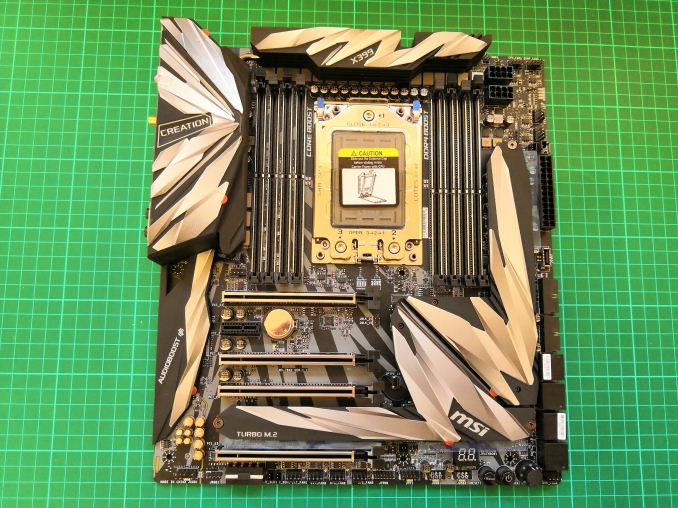
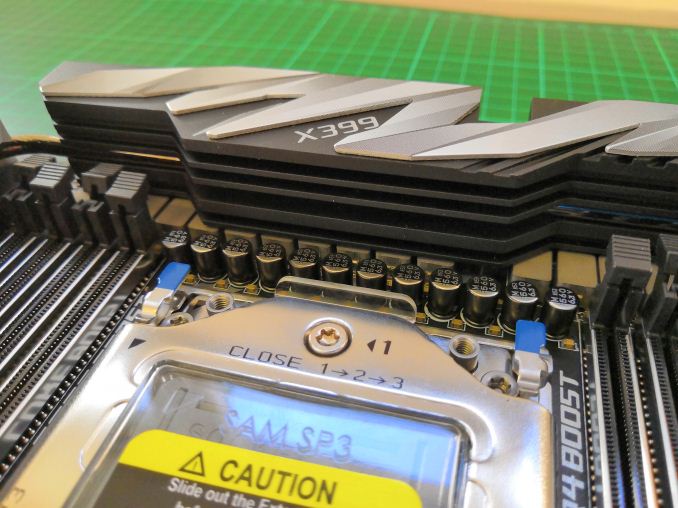


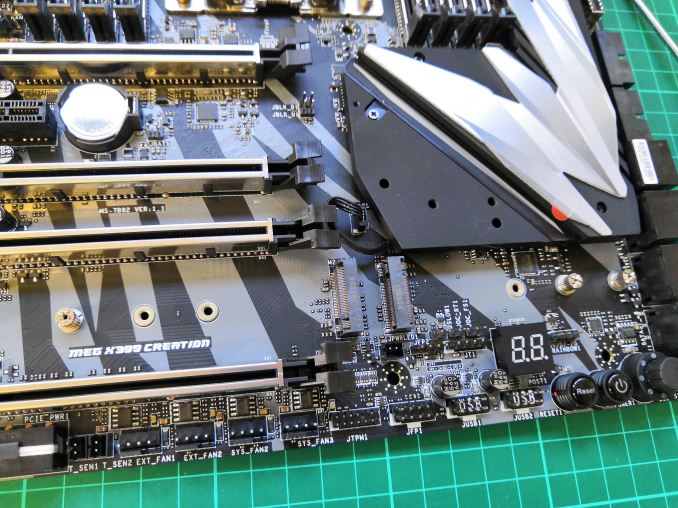
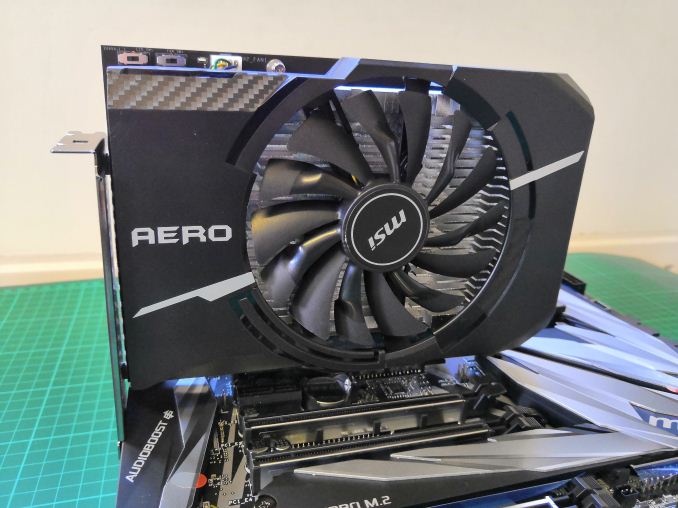
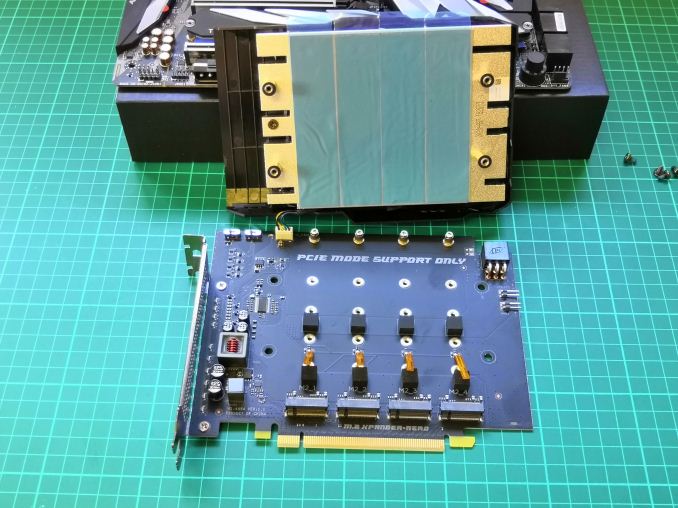
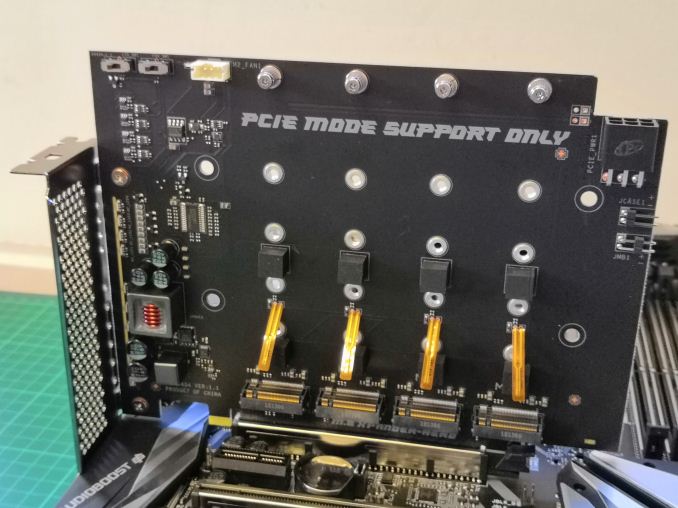

_thumb.jpg)
_thumb.jpg)
_thumb.jpg)
_thumb.jpg)
_thumb.jpg)
_thumb.jpg)








101 Comments
View All Comments
Ian Cutress - Monday, August 6, 2018 - link
I put the asterisk in to initially signify it was different, then put AMD result in just in case people took the graph without taking the context, forgot to remove the asterisk. Should be fixed.DanNeely - Monday, August 6, 2018 - link
I think I'm still a bit confused about what/why you did because I think an unverified (or at least one you can't say if is/isn't representative of what your internal testing is for a few more days) result from an OEM should be called out if put in a chart with results you and/or other testers generated directly.Spunjji - Tuesday, August 7, 2018 - link
It's mentioned in the pre-amble and labelled "AMD Result" in the chart now, which I found pretty unambiguous.DanNeely - Tuesday, August 7, 2018 - link
It's marked as such now, it wasn't when I commented.jcc5169 - Monday, August 6, 2018 - link
Did you mean to show "Ryzen 7 2800X" or is that a typo?Mday - Monday, August 6, 2018 - link
It was a typo. The specs were for the 2700x.maroon1 - Monday, August 6, 2018 - link
Cinebench would be like best case scenario for AMD 32 coresNot saying that it is bad thing. but you should expect the gap to be lower once you use other benchmarks. Cinebench scales very well with cores. but not only that. It also like ryzen more than intel unlike most other benchmarks. And there is no surprise that AMD started using that benchmark for their advertisement after they release ryzen
rUmX - Monday, August 6, 2018 - link
Every company would use a benchmark that would show their product in the best light. However I'm interested in knowing what the average turbo speeds for each clock rate. What will the difference be if one used that 500w AiO compared to stock cooling.blppt - Monday, August 6, 2018 - link
Not sure why you've concluded that CB R15 favors Ryzen---the 16/32 7960X (barely) beats the 1950X, which seems about right to me. With all 16 (32) cores saturated, the 1950X tops out at 3.4ghz turbo, and the 7960X is somewhere around 3.6.maroon1 - Monday, August 6, 2018 - link
8700K only beats 2600X by 6.4% in cinebench from what I've seen. Yet in almost every other non-gaming benchmarks it show more than 6.4%.Even AMD slides themselves show that cinebench favor ryzen, even among other 3d rendering benchmarks
https://screenshotscdn.firefoxusercontent.com/imag...
You should except things to be even worse if you use something like H.265 encoding because does not scale with cores like rendering benchmarks
While 2990WX is going to be faster than intel 7980X overall, the gap is not going to be 50% or even close. I expect to be maybe 30% (if not less) faster on average